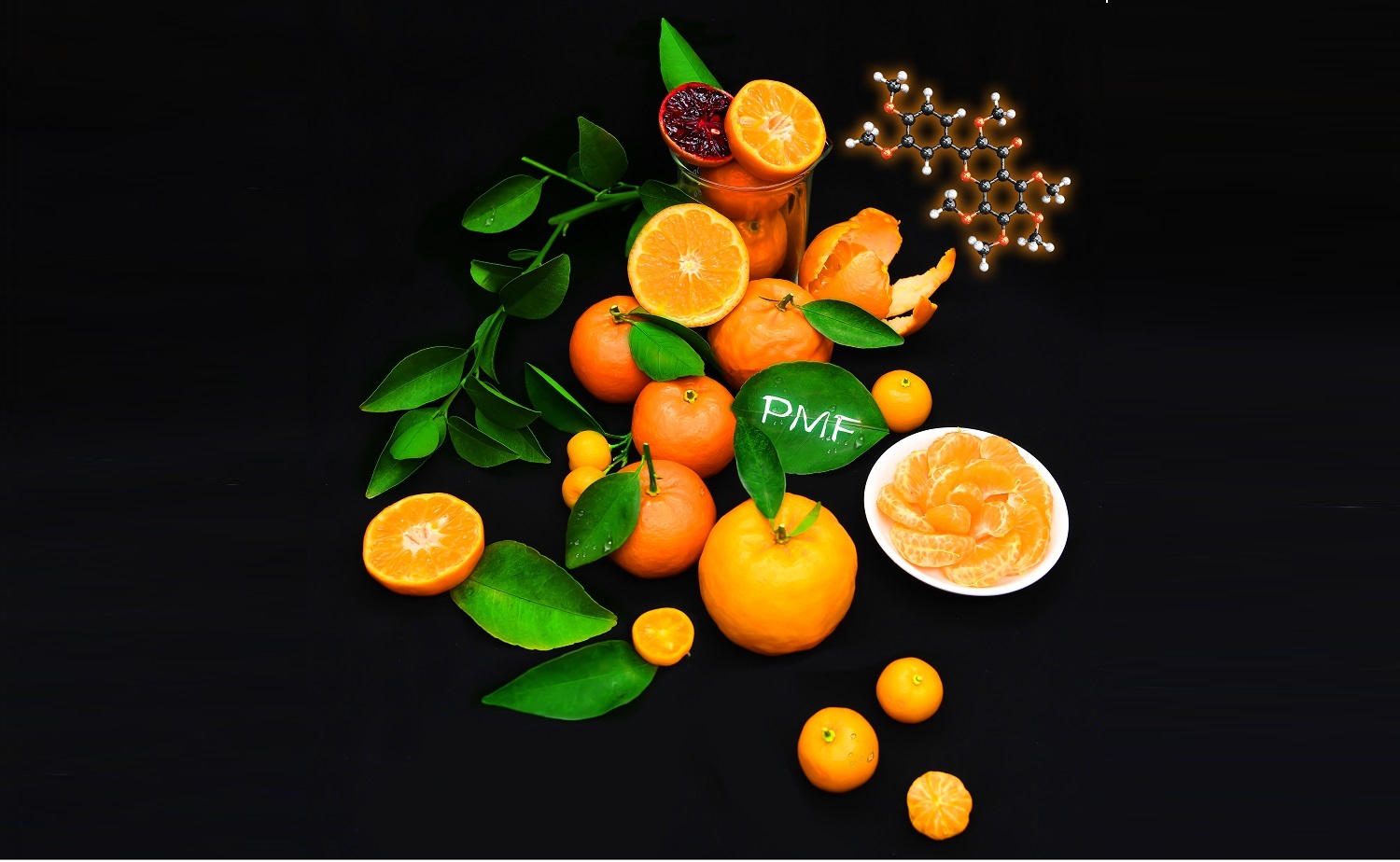
Recently, a research paper by the research group of Professor Xu Juan from the College of Horticulture & Forestry Sciences/National Key Laboratory for Germplasm Innovation & Utilization of Horticultural Crops, Huazhong Agricultural University, was published in the Proceedings of the National Academy of Sciences of the United States of America (PNAS). The study revealed the phenomenon of species-specific accumulation of polymethoxyflavones (PMFs), an important functional component of citrus fruits, identified the key tandem repeat OMT gene cluster for PMF biosynthesis, and analyzed the origin and evolutionary process of the OMT cluster in the subfamily Aurantioideae. This study provides a theoretical basis and important genetic resources for the genetic improvement of the functional quality of citrus fruits.
PMFs are a special class of secondary metabolites that are mainly present in plants of the genus Citrus and are known as “natural anticancer drugs”. The research team collected 147 germplasm resources of the subfamily Aurantioideae and established a citrus PMF metabolite database. They found that PMFs are highly accumulated in wild mandarins and early hybrid citrus, low accumulated in modern cultivated citrus and their related hybrids, and not accumulated in citrus relatives and early differentiated citrus. Therefore, it is speculated that the PMF metabolic pathway may have first appeared in wild mandarins in citrus.
The study located three candidate OMT genes on a tandem candidate interval on the citrus genome, and the gene cluster composed of these genes is closely related to the biosynthesis of PMFs. Through biochemical and gene function analysis, it was identified that the three OMT enzymes encoded by the gene cluster all showed multi-site O-methylation modification function in vitro and in vivo experiments and participated in the biosynthesis of seven key citrus PMFs.
Further analysis found that the OMT cluster originated from the expansion of the OMT6 gene. Homologous genes of the OMT6 gene exist in different types of citrus fruits, and the OMT cluster only appears in citrus and its descendant sweet orange, and PMFs are accumulated. Compared with OMT6 in citrus relatives and early differentiated citrus, multiple mutations in mandarins enable it to acquire O-methylation modification function at position C3, revealing its neofunctionalization process, and subsequently evolving multifunctional OMTs in the clade of mandarin origin, thus evolving the PMF metabolic pathway in mandarins. The research provides an important basis for the de novo synthesis of the PMF biosynthesis pathway and a theoretical basis for the breeding of functional citrus.
Professor Xu Juan, Associate Professor Chen Jiajing, and Professor Xu Qiang from the Citrus Team of Huazhong Agricultural University are the corresponding authors of the paper. Peng Zhaoxin, a postdoctoral fellow who has left the station (now working at the Economic Crops Research Institute of Hubei Academy of Agricultural Sciences), and Song Lizhi, a doctoral student at Huazhong Agricultural University, are the co-first authors of the paper. The research was funded by the National Key Research and Development Program, the Hubei Hongshan Laboratory Fund, the National Natural Science Foundation of China, and the Key Project of the Natural Science Foundation of Hubei Province.

